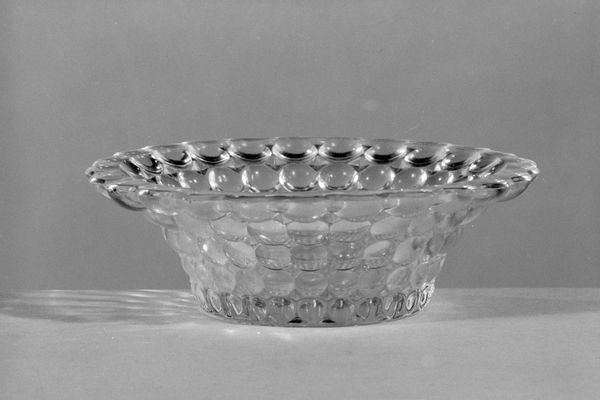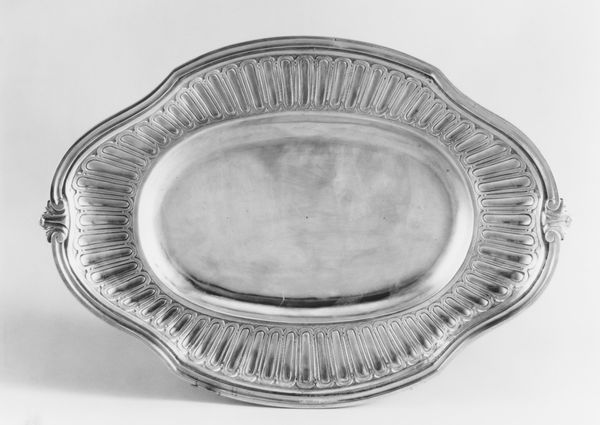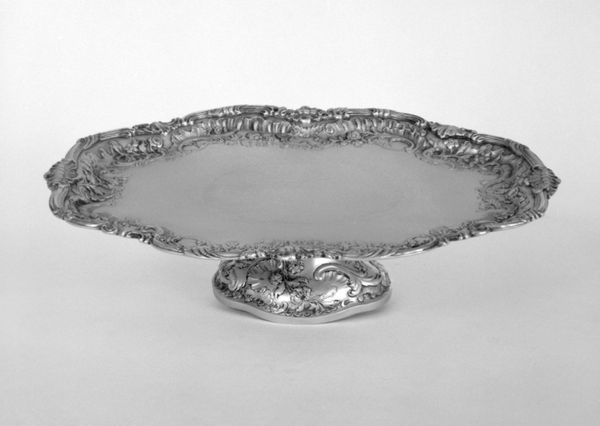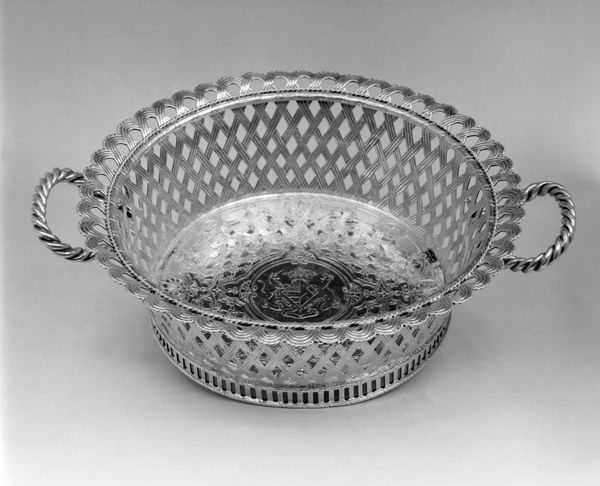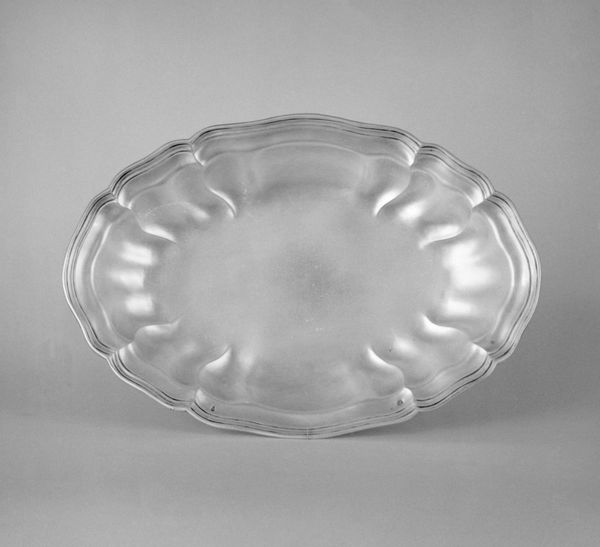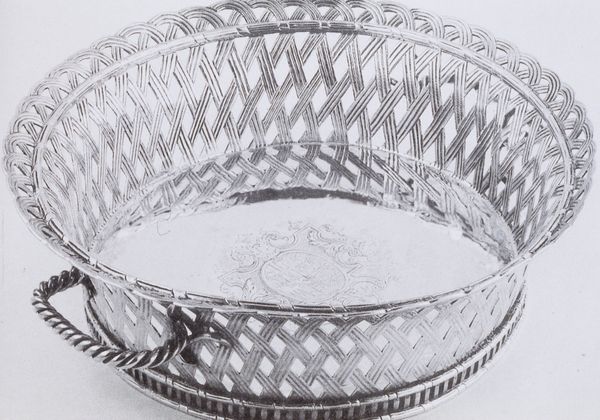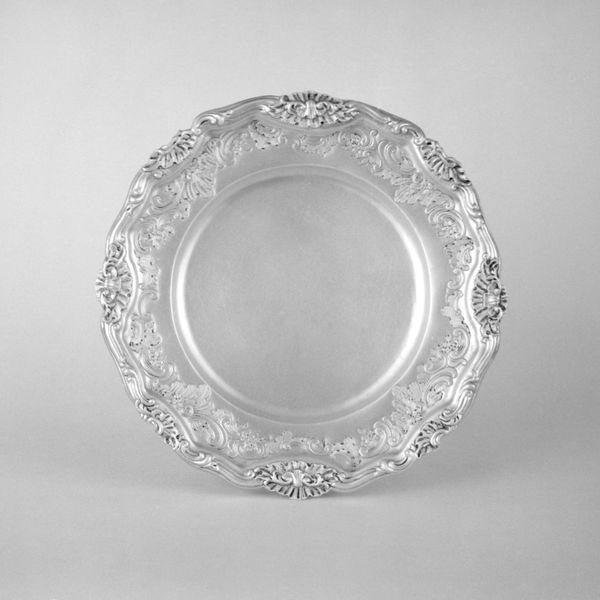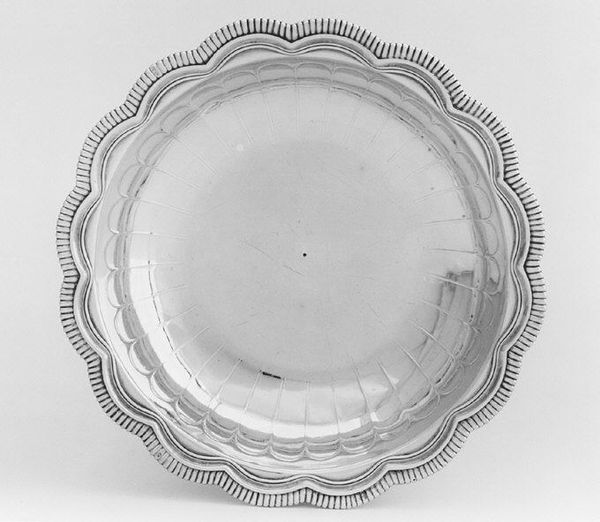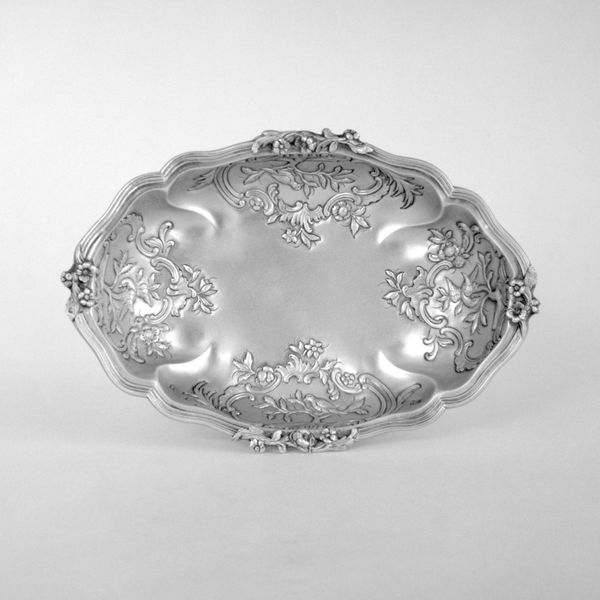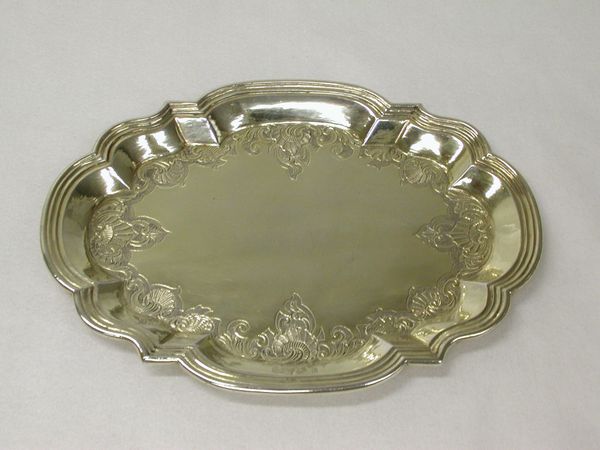
silver, metal, metalwork-silver, sculpture
#
silver
#
baroque
#
metal
#
metalwork-silver
#
sculpture
#
decorative-art
Dimensions: Overall: 3 3/4 × 11 in. (9.5 × 27.9 cm) Width across handles: 13 3/4 in. (34.9 cm)
Copyright: Public Domain
Curator: At first glance, this strikes me as overwhelmingly ornamental. All that intricate silver work, gleaming...it seems like such a symbol of excess. Editor: And perhaps it is. What you're looking at is "Basket (one of a pair)", crafted between 1729 and 1730 by Paul de Lamerie. It’s a sterling example—literally—of Baroque decorative art. Curator: The material itself speaks volumes. Silver, so deliberately fashioned into a basket...who was consuming from this? What was the labour that brought this ornate thing into existence, a physical manifestation of privilege and the hierarchical structure it represented? Editor: Well, we can surmise it likely belonged to someone of significant means. These types of objects served not just a practical function, holding fruit perhaps, but primarily a social one. They showcased wealth, status, a participation in refined culture. Curator: The symmetry is almost unsettling given what it would likely mean to be living under the roof that sheltered it. Even the twisted handles, so carefully wrought, feel like symbols of power and control of materials in an unfair structure. Were those who produced the silver ware partaking in the excess displayed in them? Editor: It also interests me how an object like this blurs the lines between art and craft. We celebrate de Lamerie’s artistry, and rightly so, but let’s not forget the workshop involved, the labour divided, the varying degrees of skill contributing to the final product. How might understanding its production complicate notions of individual artistic genius? Curator: Precisely. De Lamerie's piece invites consideration of the unequal distribution of power that often lies behind objects that are, on their surface, merely decorative. It's a useful provocation for interrogating the political landscape of art. Editor: So, a beautiful object then, yes, but one embedded in the material reality of its time, reflective of social divisions, and revealing uncomfortable questions even now. Curator: A reminder that beauty is often contextual and sometimes even deceptive. Editor: Indeed, let’s see how this impacts our audiences perspective.
Comments
No comments
Be the first to comment and join the conversation on the ultimate creative platform.
